A Meal Around the World: What a Plate of WFP Food Looks Like in 9 of the World’s Hungriest Countries
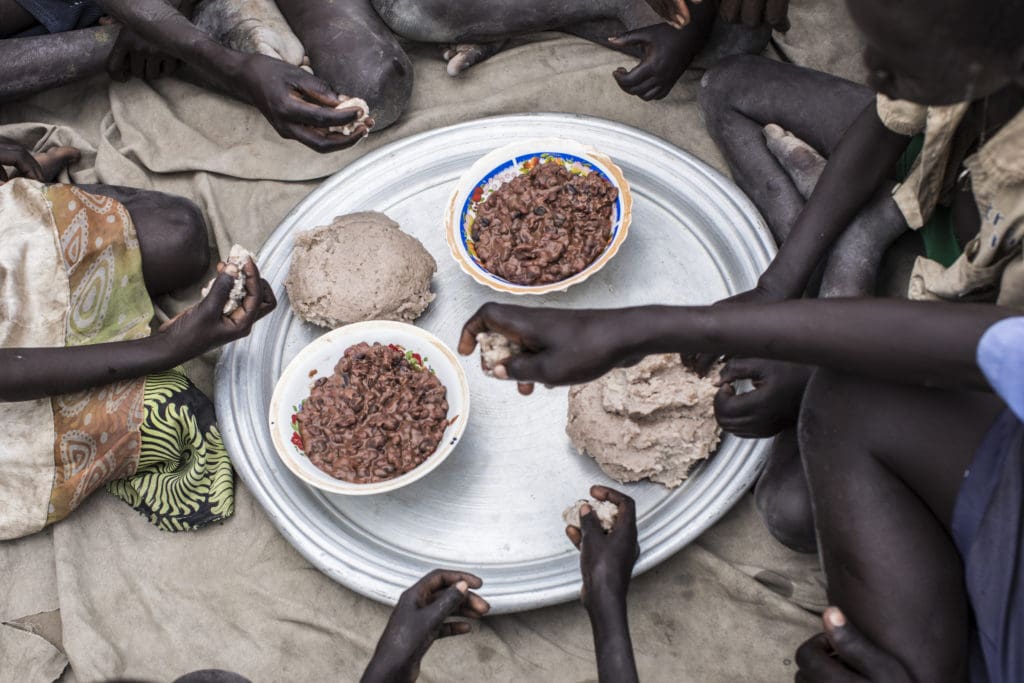
Many of the people we write about rely solely on the United Nations World Food Programme (WFP) for their basic needs. And the needs of people who live in extreme poverty, conflict zones and refugee camps are varied. Some need safe places to live, some need schools, others need access to healthcare. But the one thing they all need is food.
This is where the U.N. World Food Programme comes in—from beans and grains to snack bars and micronutrient powders. Food brings families together everywhere, especially when times are tough. For World Pulses Day, let’s take a look at the meals that provide both survival and solace across the globe—whether it’s guirilas in Nicaragua or rice and beans in Rwanda.
1. Eggplant Curry for a Family in Bangladesh
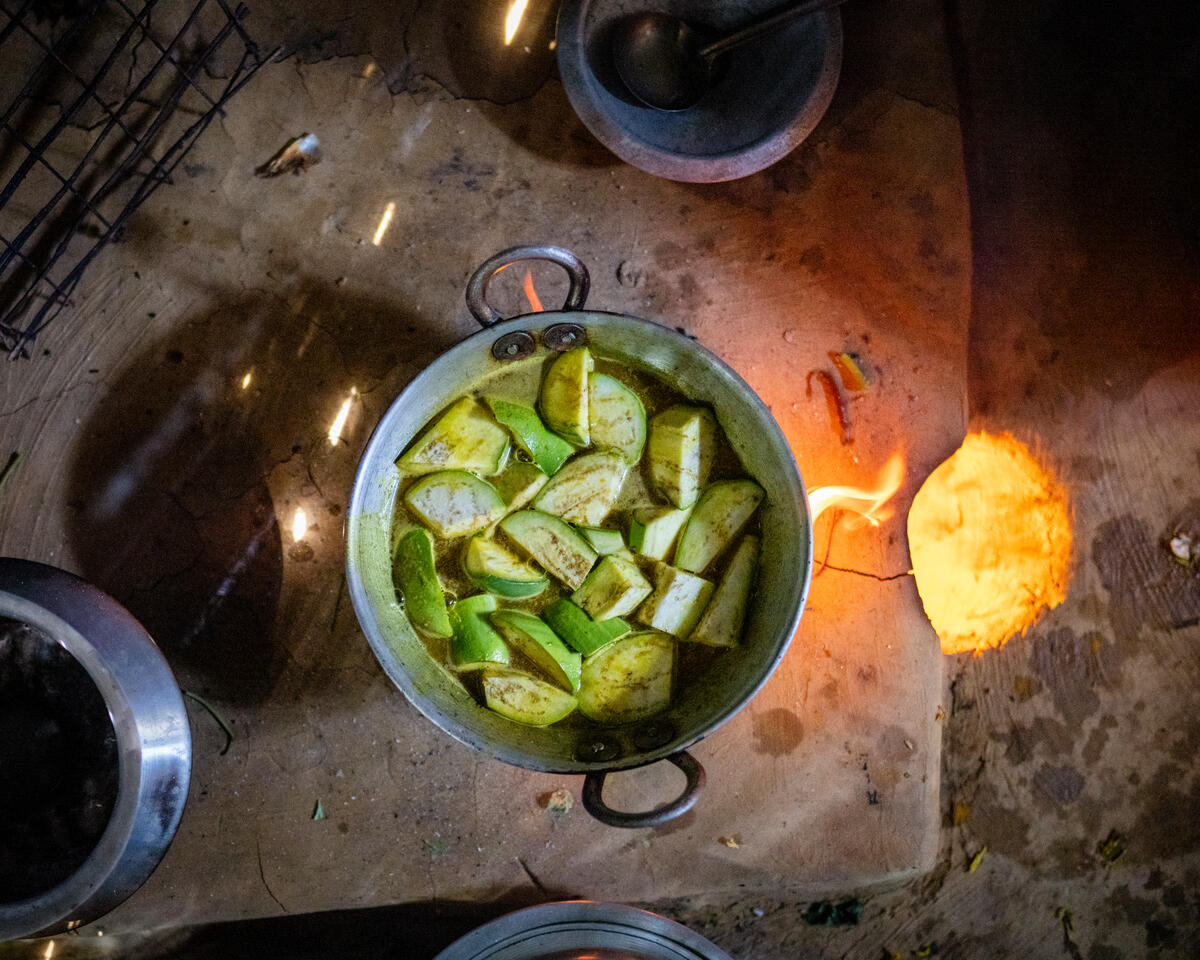
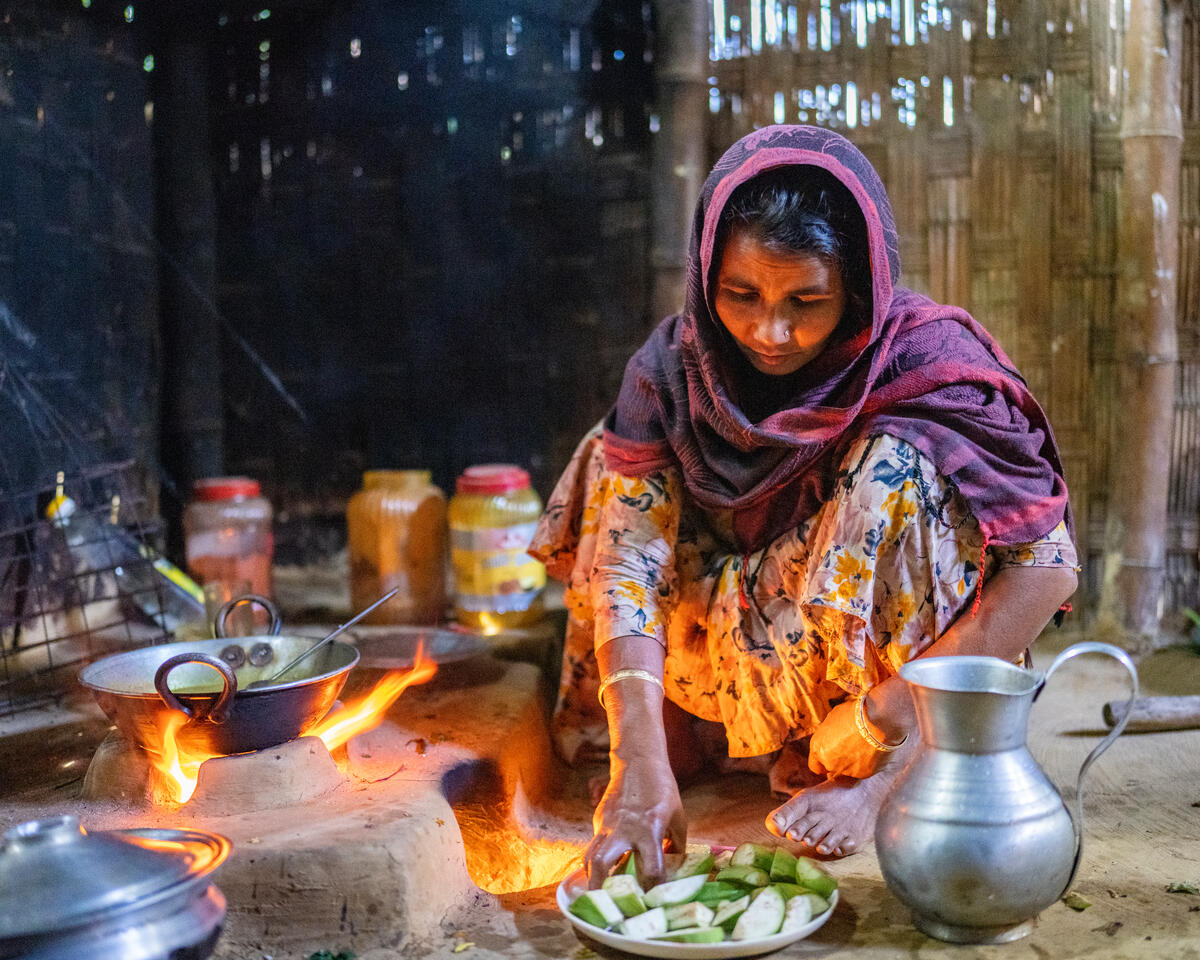
Hason Ara Begum, a mother of six and the main breadwinner of her family, prepares a savory eggplant curry for lunch. Nearly four years ago, through WFP’s livelihoods program in Cox’s Bazar, Hason learned the financial and entrepreneurial skills she needed to start her own farming business. Today, Hason’s husband supports her in managing and cultivating their farm.
2. Tortillas, Rice and Beans for Schoolchildren in Nicaragua
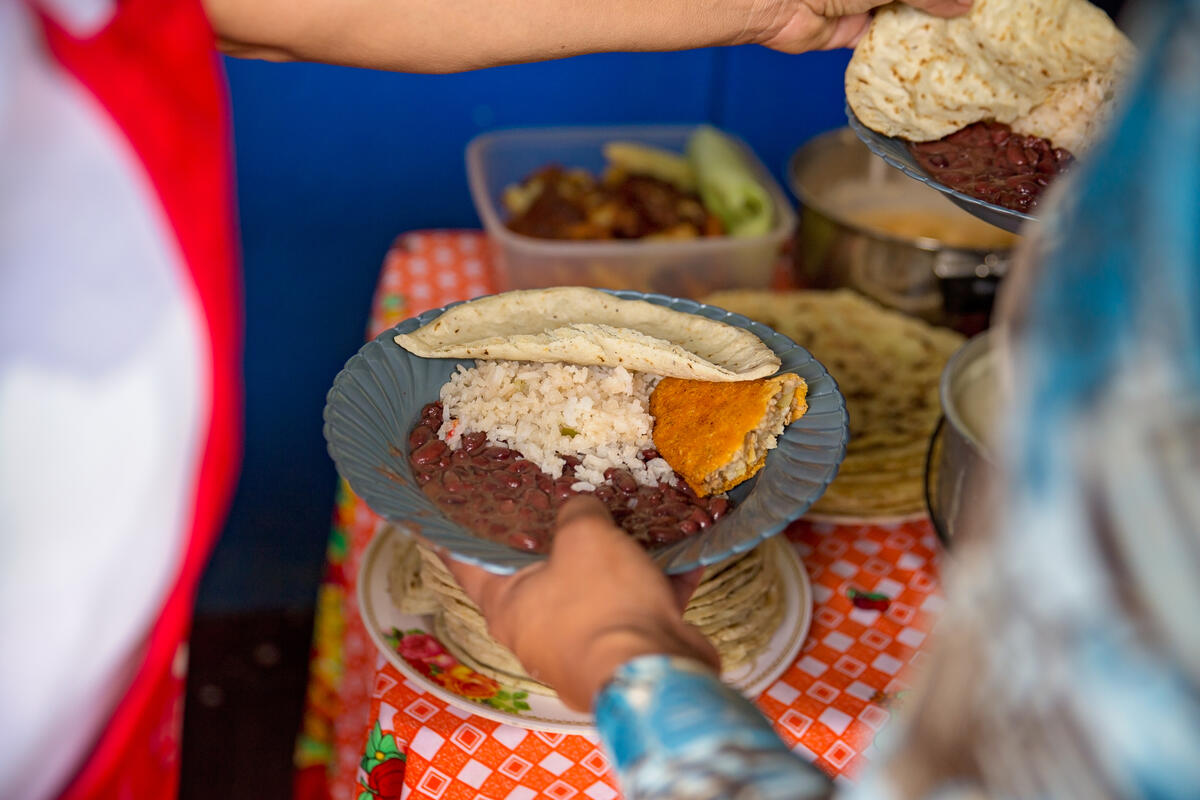
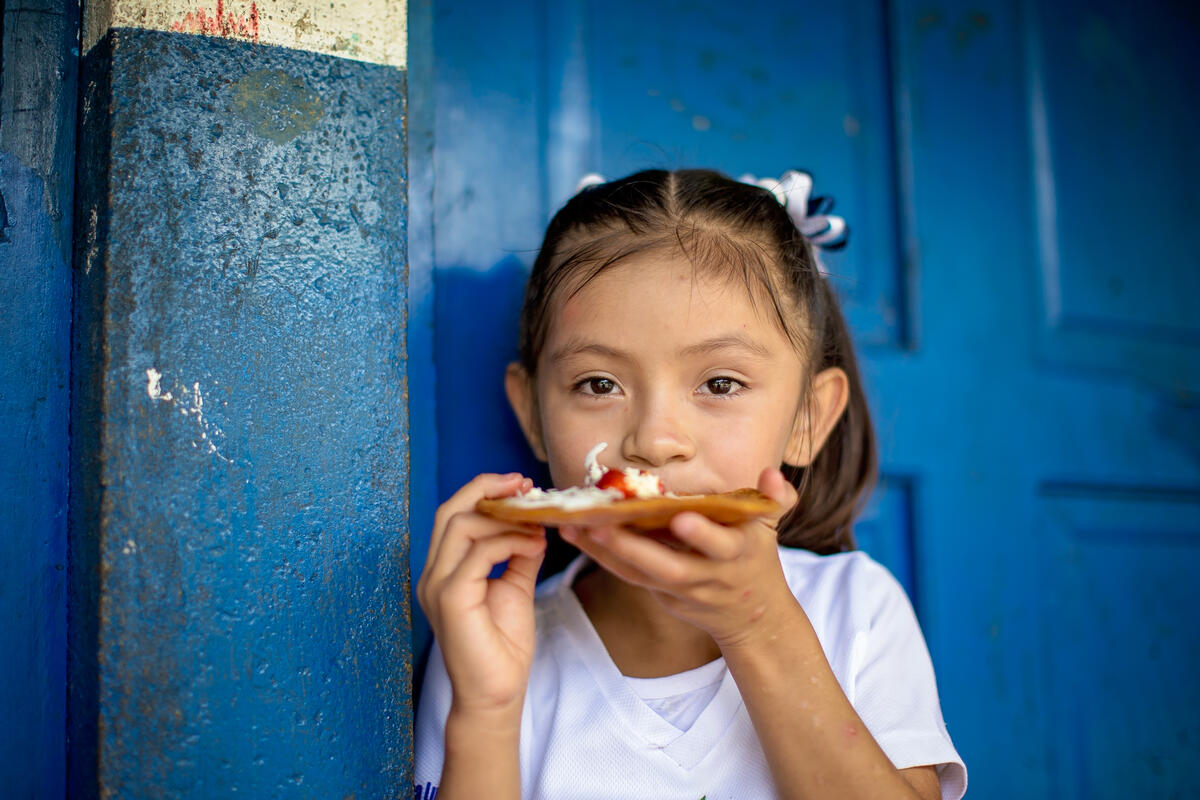
In the mountains of Jinotega, Nicaragua, the hustle and bustle of classrooms quiets down as children tuck into school meals of rice, beans, tortillas and guirilas: a type of tortilla that originated in the north of Nicaragua and is made from sweet corn and often banana leaves.
When Hurricanes Eta and Iota damaged schools in Jinotega, WFP stepped in to supply corn, beans and rice from small and local producers. Parents then volunteered to prepare these ingredients, cook the school meals in their own homes and deliver them to the schools.
3. Sorghum with Beans for a Family in South Sudan
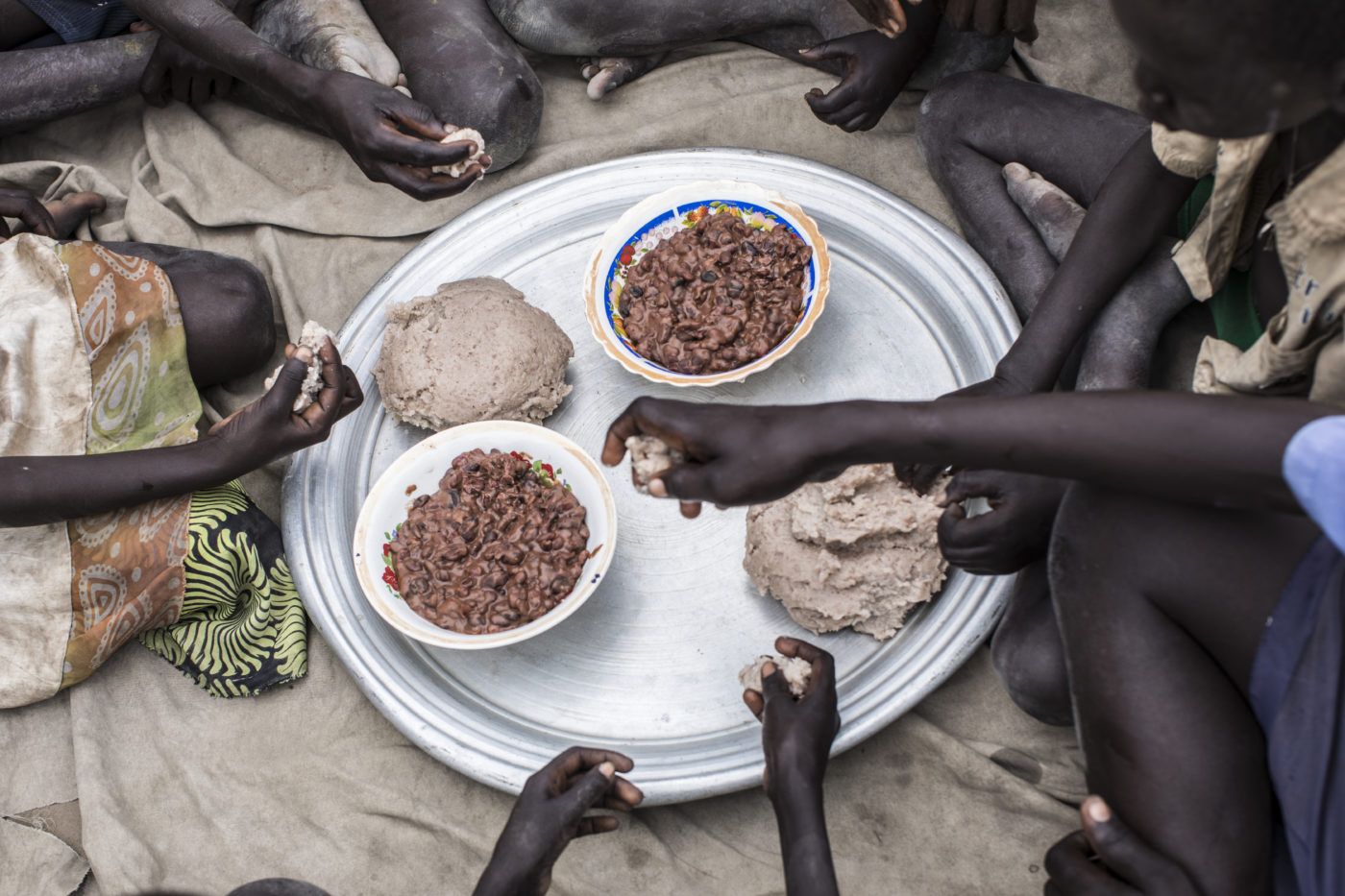
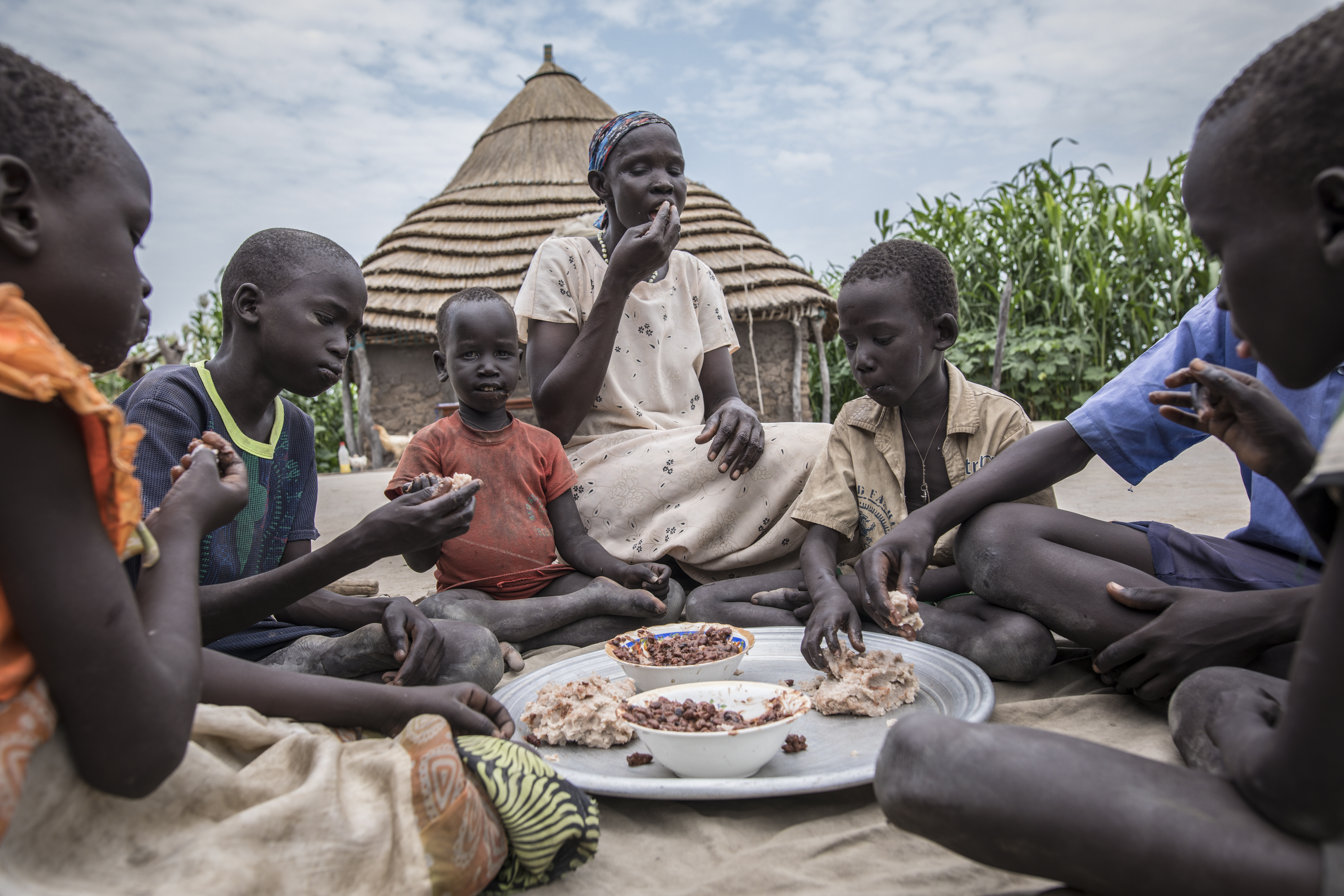
Nyanut Lual Aleu joined her family for a meal of stewed beans and sorghum cakes, ingredients from the U.N. World Food Programme. Although hunger prevails in many parts of South Sudan, there are small pockets of stability where the U.N. World Food Programme is helping locals close short-term hunger gaps and build resilience against future challenges.
Nyanut said she was very happy to be part of the program. “My life changed completely since I am in the program,” she said. “I was able to build a new house and send my seven children to school. Now I can buy what is important for me. I am improving little by little. Now I cultivate my own food in my garden, I am so happy!”
4. Hummus and Cauliflower Salad for a Mother and her Children in Palestine
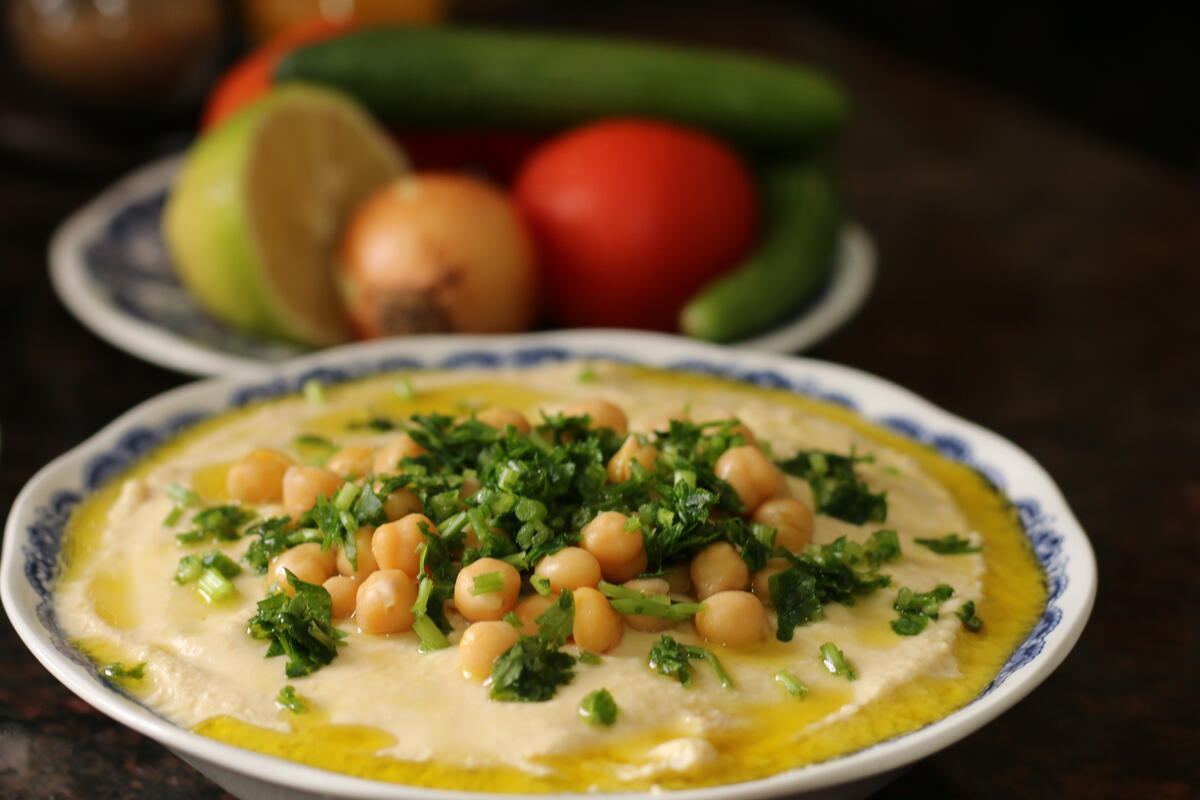
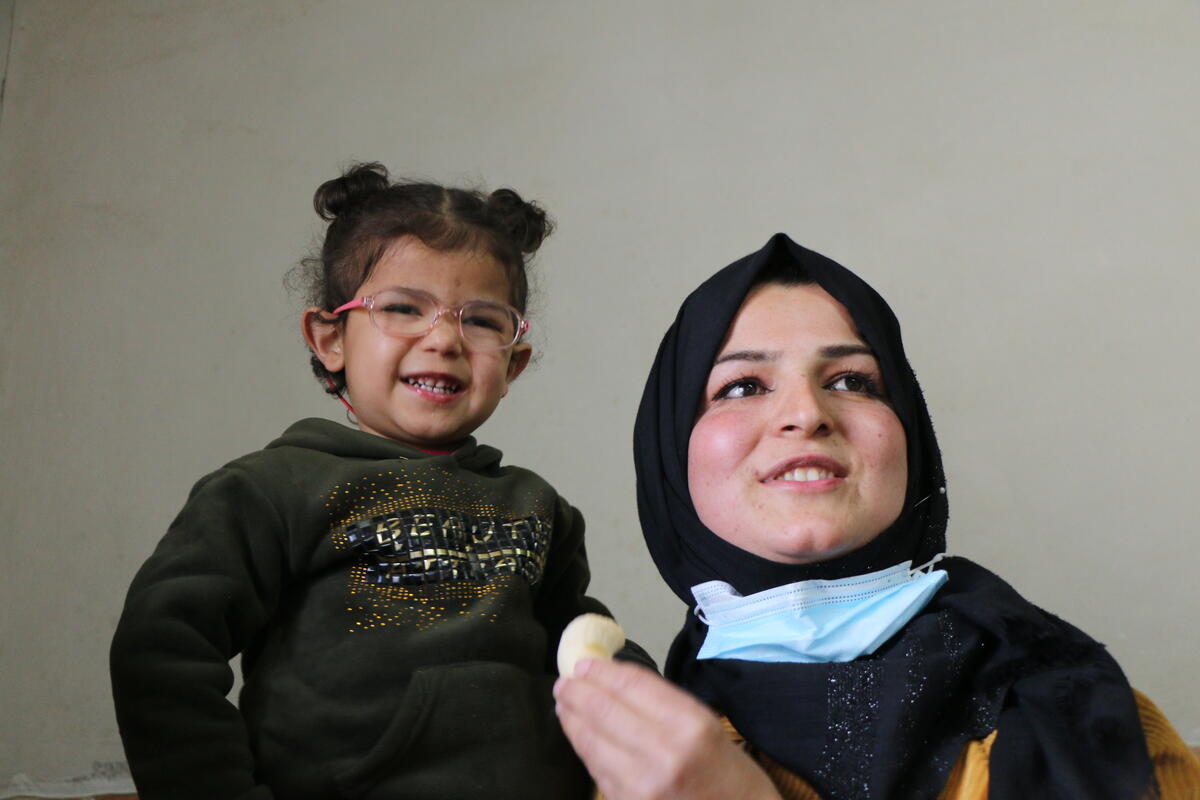
Amina prepared a vegetarian meal of cauliflower salad and creamy hummus garnished with lemon and chickpeas. To reduce vitamin and mineral deficiencies, WFP provides nutritional education for mothers like Amina who already have a lot on their plate caring for themselves and children under the age of five. Invisible to the eye, Amina’s cauliflower salad is also rich in Iron—an important value-add to the dish since nearly 30 percent of women worldwide are affected by anemia.
5. Rice and Beans for Children in Mozambique
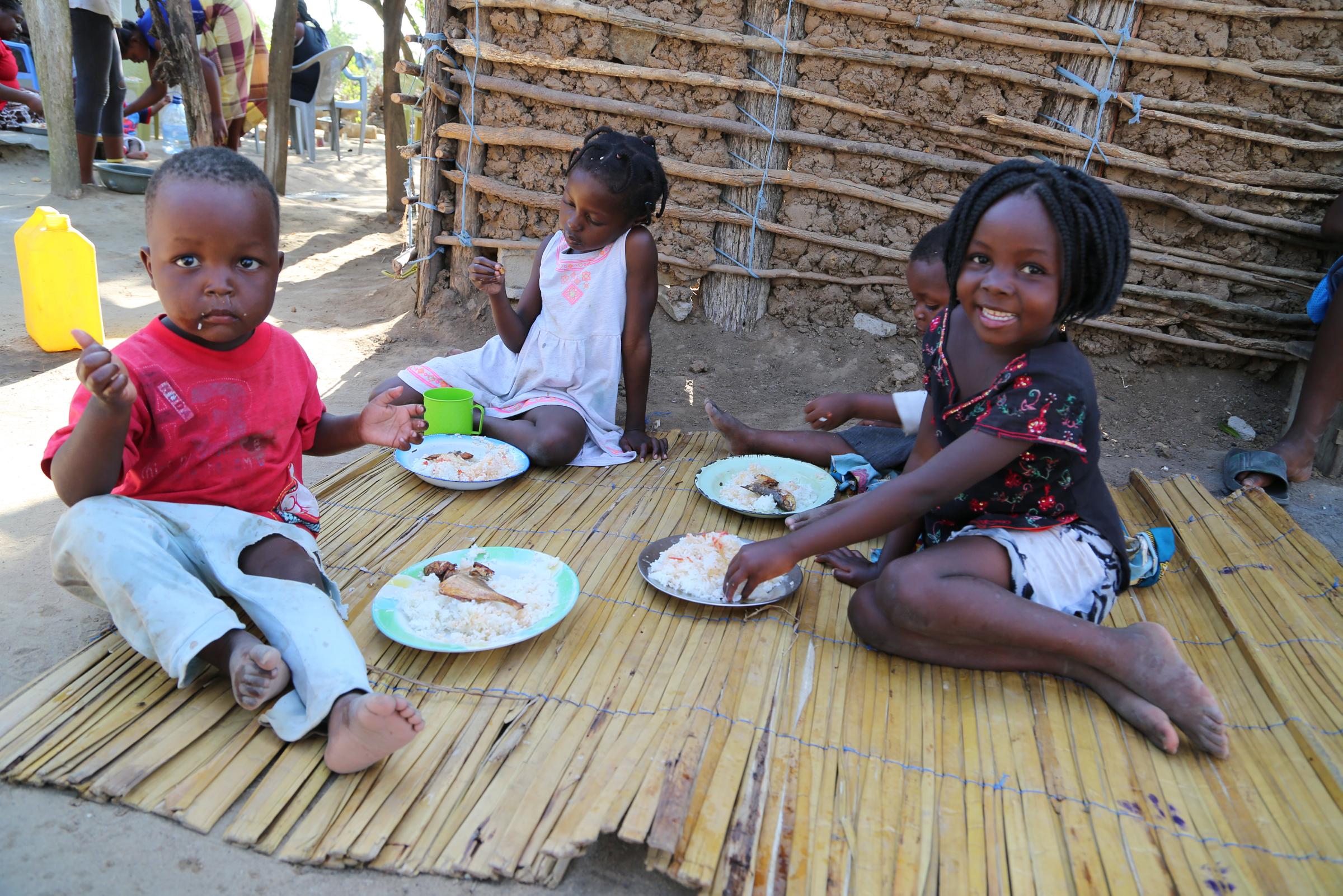
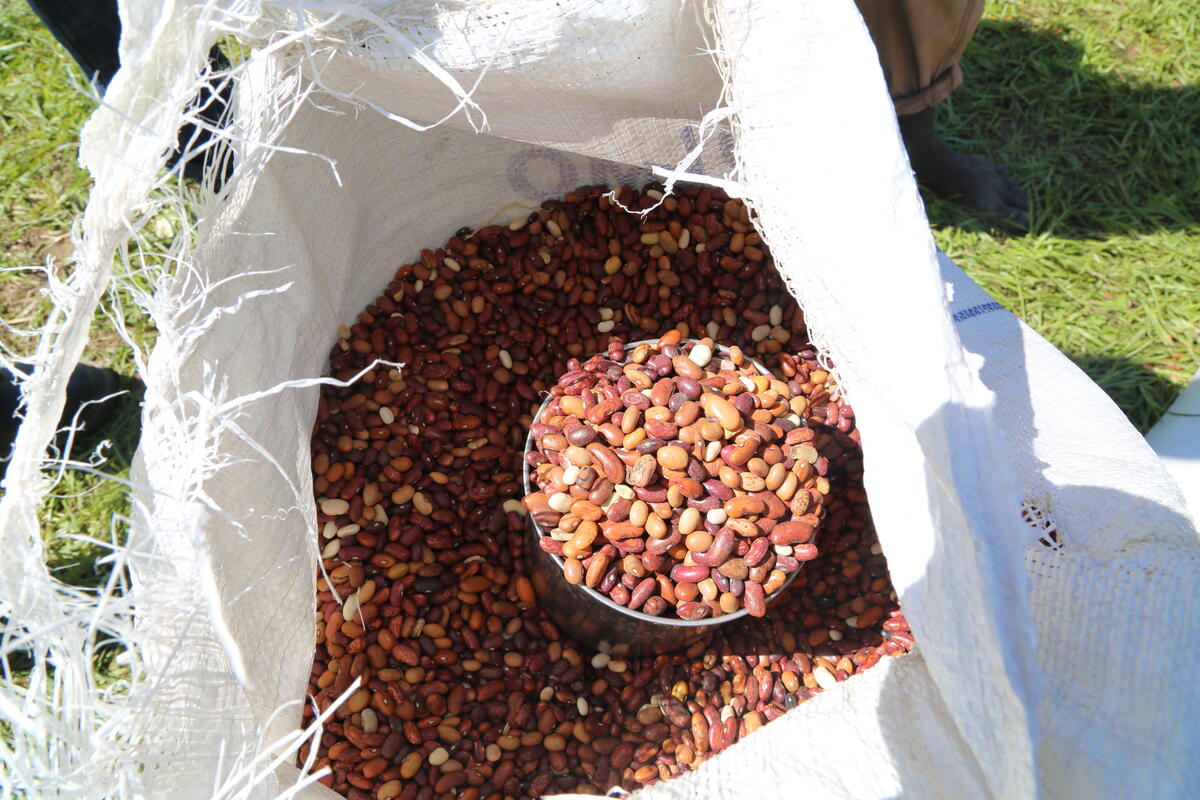
It’s hard to believe this smiling little girl’s home in Mozambique had just been destroyed by Cyclone Idai when this photo was taken. She and a dozen other family members were living at their great-grandmother’s house after the floods destroyed crops in the area and most people lost their jobs. In this photo, some of the younger family members have come together for a warm, humble meal of rice and beans. The U.N. World Food Programme supported the government’s disaster response by providing lifesaving food assistance to local communities, including two-week rations of rice, beans and cooking oil. For this little girl and her fellow diners, this was their only meal of the day.
6. Vegetables and Rice for a Displaced Family in Yemen
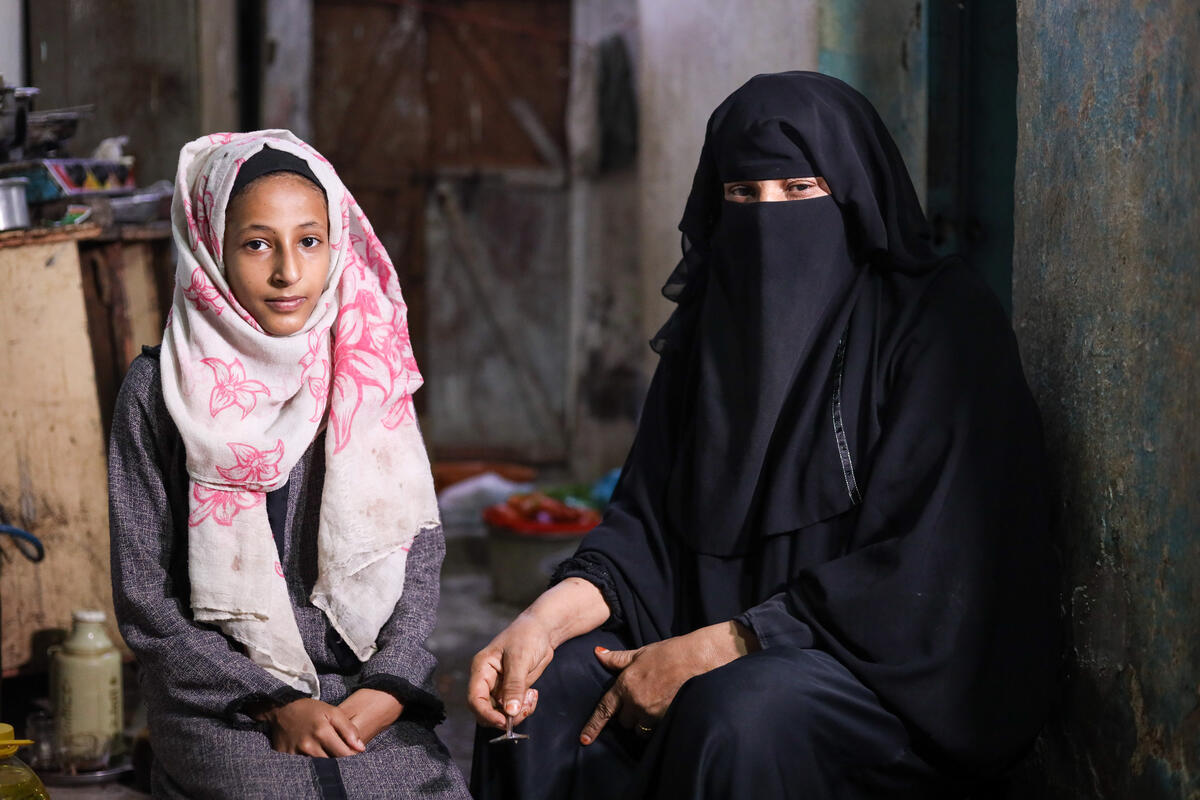
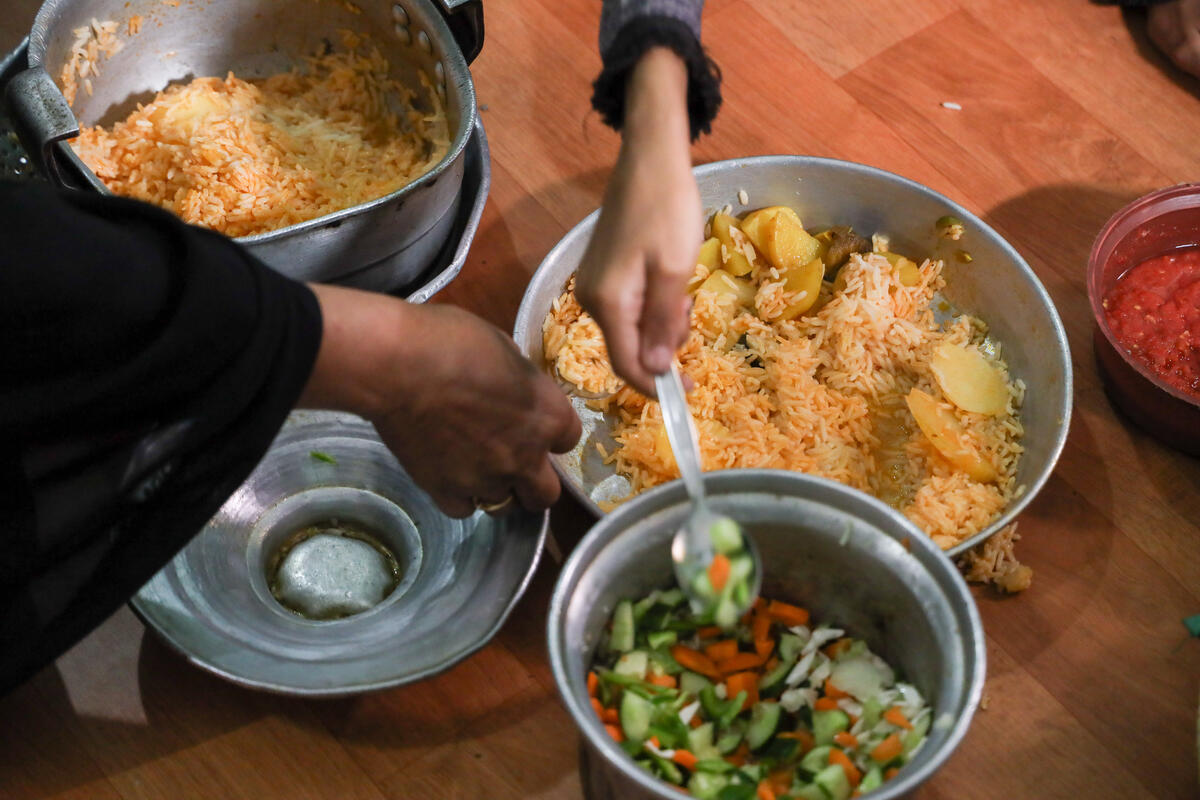
Oloum and her 11-year-old granddaughter Riham worked together in their kitchen to prepare a colorful lunch of yellow rice and vegetables. In Yemen, war and conflict has displaced 4 million people from their homes and driven them into a hunger crisis. Oloum’s family is one of the millions who left everything behind of their home in Al Hodeidah and began anew some 200 miles south in the city of Taiz.
For displaced families like Oloum’s, WFP’s monthly vouchers restore a degree of purchasing power and ownership over their livelihoods. Voucher in hand, Oloum can visit her local shops and markets to buy the foods of her choice to feed her family.
7. Tôh and Okra Soup for a Small-Scale Farming Family in Guinea
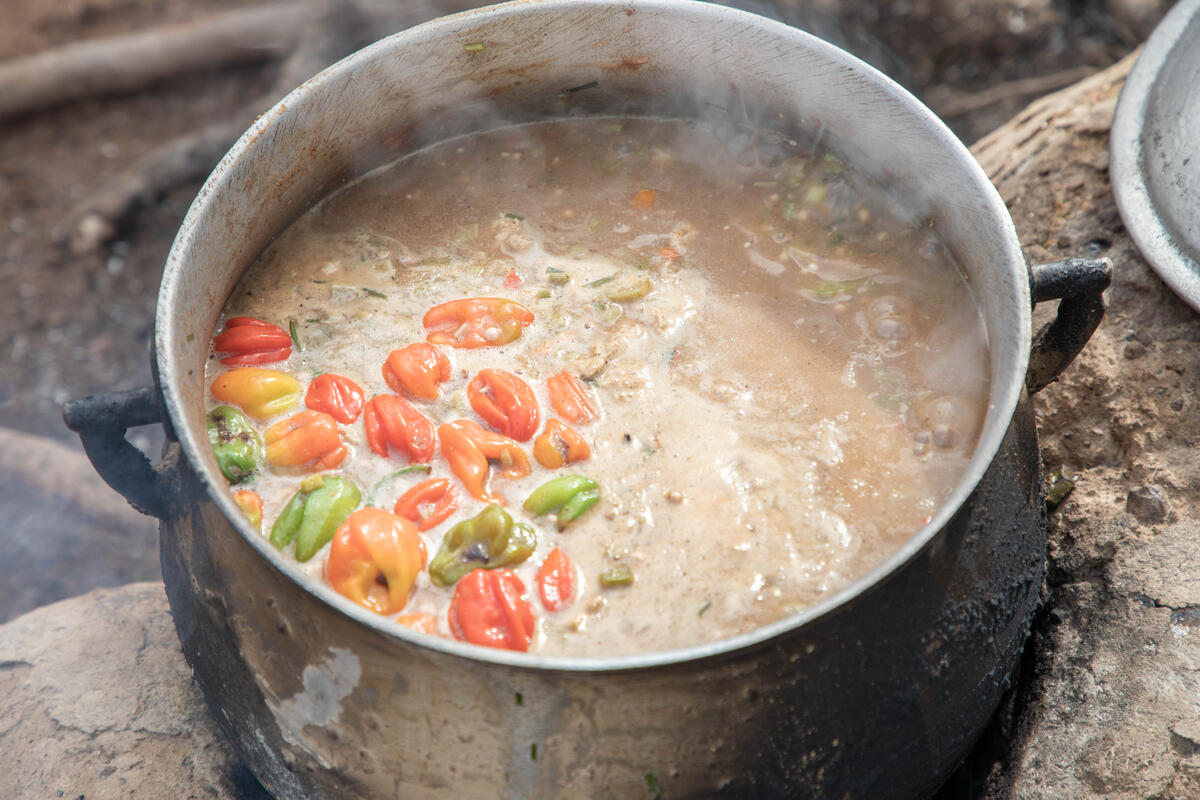
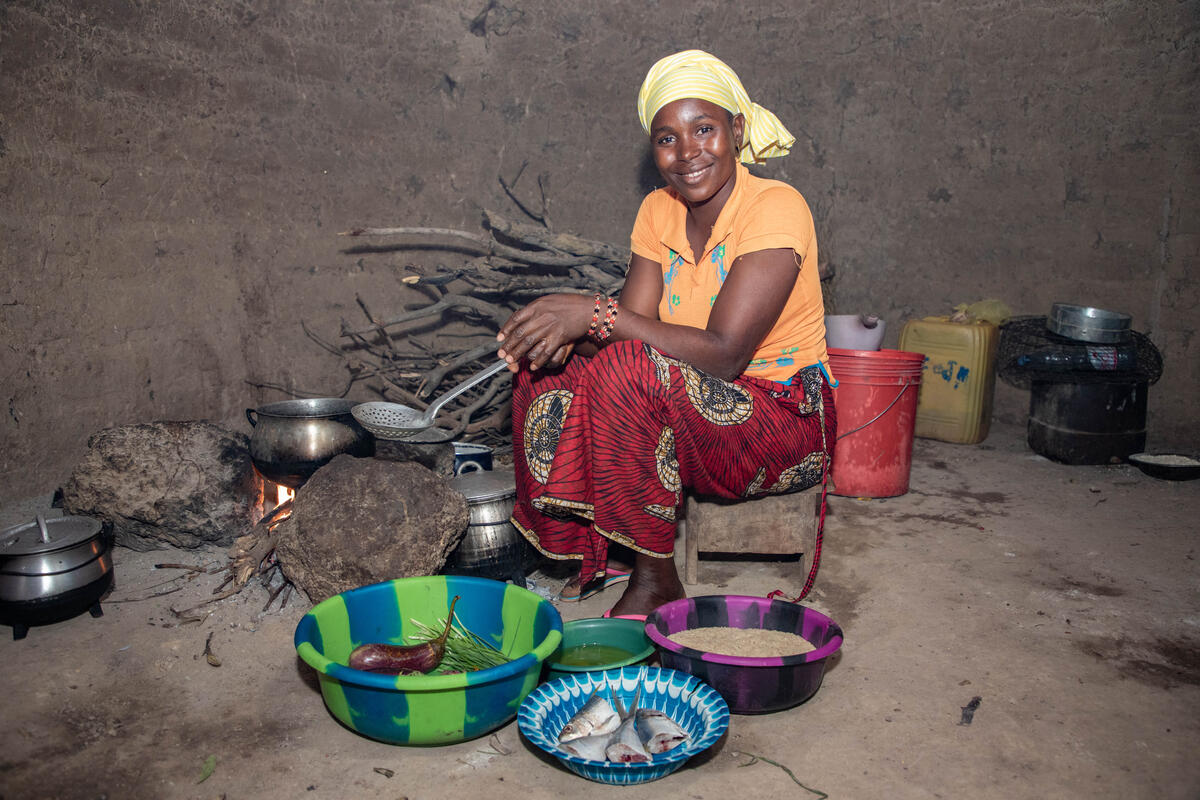
Okra soup (or sauce) is a typical West African dish that may be accompanied by Tôh—a dough made from cassava flour cooked in boiling water—when families like Fadima Ketia’s are unable to afford rice.
After joining WFP’s RESIGUI project, Fadima began receiving cash assistance to cover her family’s food and nutrition needs for three months. Through a WFP-supported gardening group, Fadima also received the farming tools, seeds and training to improve and diversify crop yields. Now, even during non-harvest periods, she can bring home enough rice and vegetables to keep her family happy and healthy.
“Previously, when I cook Tôh for my children and go to the farm, I mostly come back home and find it untouched. I am very happy that I can now cook rice and serve my family for lunch, which they like,” said Fadima.
8. Chicken, Carrots and Tortillas for Disaster Survivors in El Salvador
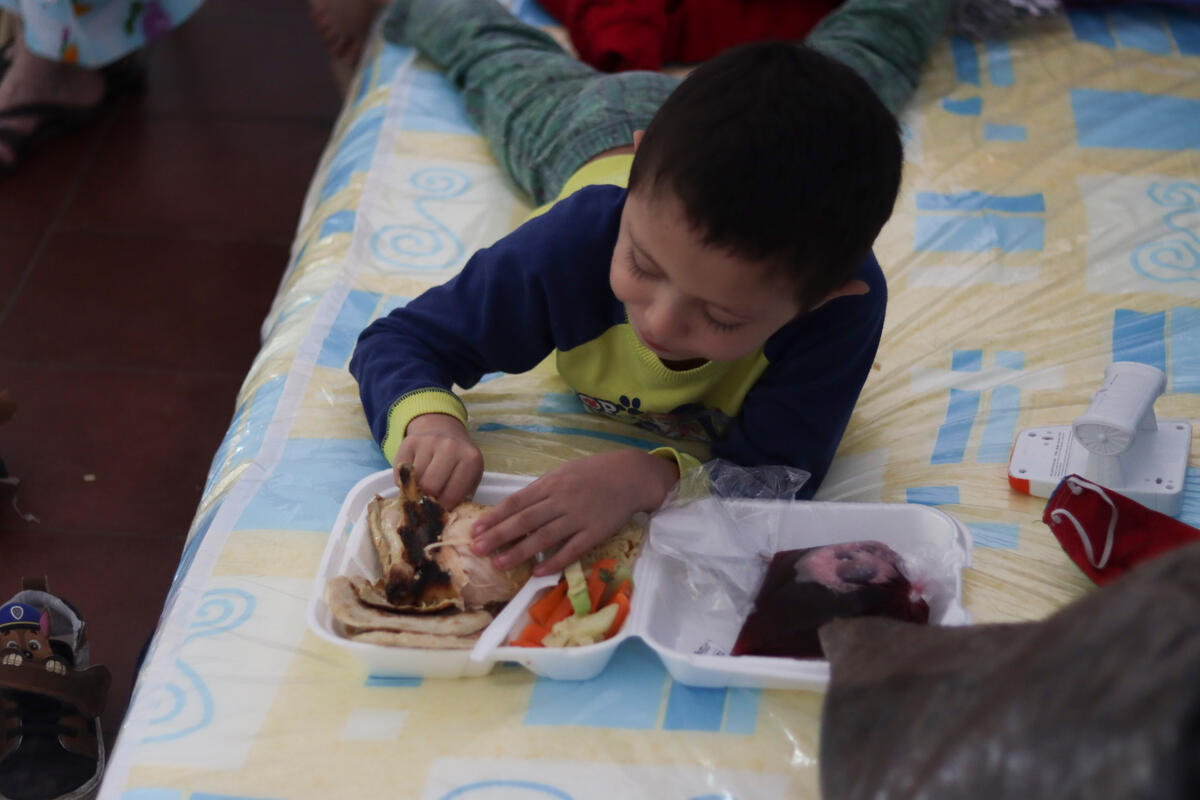
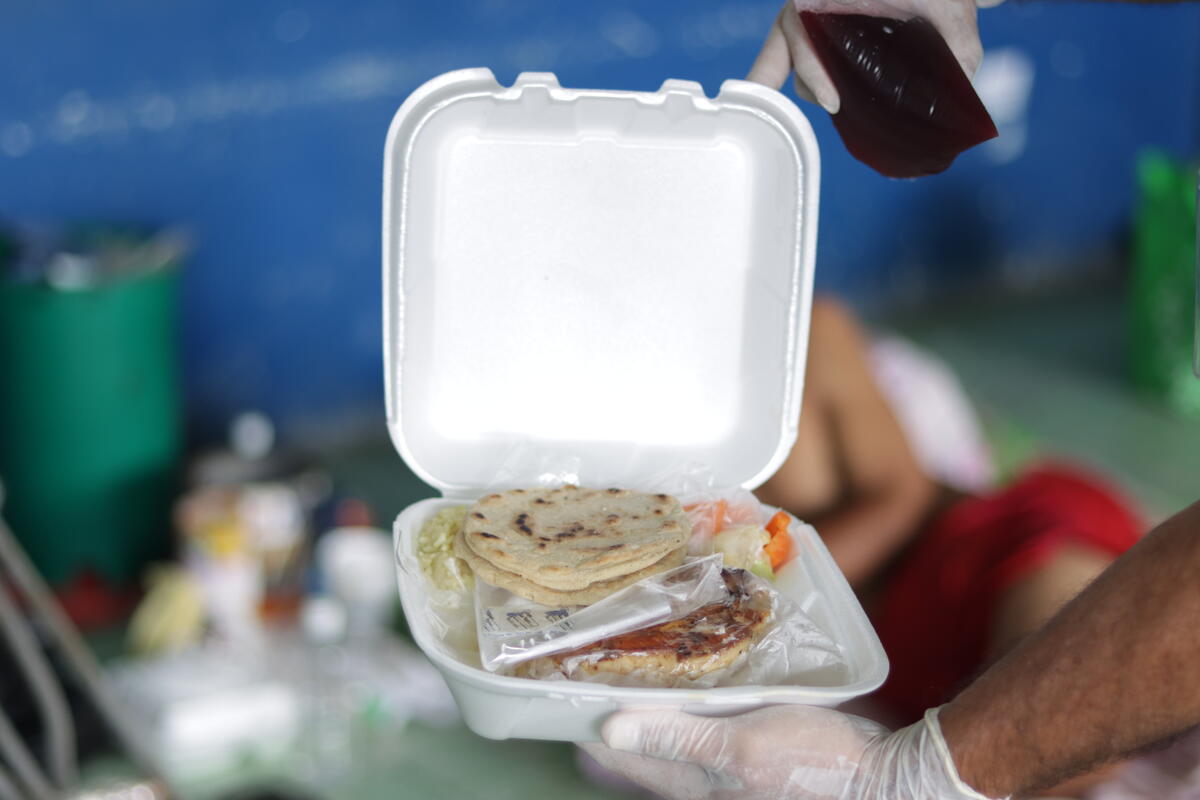
Survivors of weather disasters face many challenges, from rebuilding homes to replanting crops. They shouldn’t have to persevere on an empty stomach. That’s where WFP steps in to put hot meals in the hands of men, women and children like this little boy who eagerly tore into tender pieces of chicken and warm tortillas in the wake of Tropical Storm Amanda. When the storm hit El Salvador in the summer of 2020, families gathered in temporary shelters to receive food and cash assistance from WFP.
Meals such as these are not only a physical need but an emotional comfort, providing a moment of community where survivors can gather over a hot lunch, lean on one another and face the challenges ahead together.
9. Fresh Vegetables, Rice and Beans for a Refugee Family in Rwanda
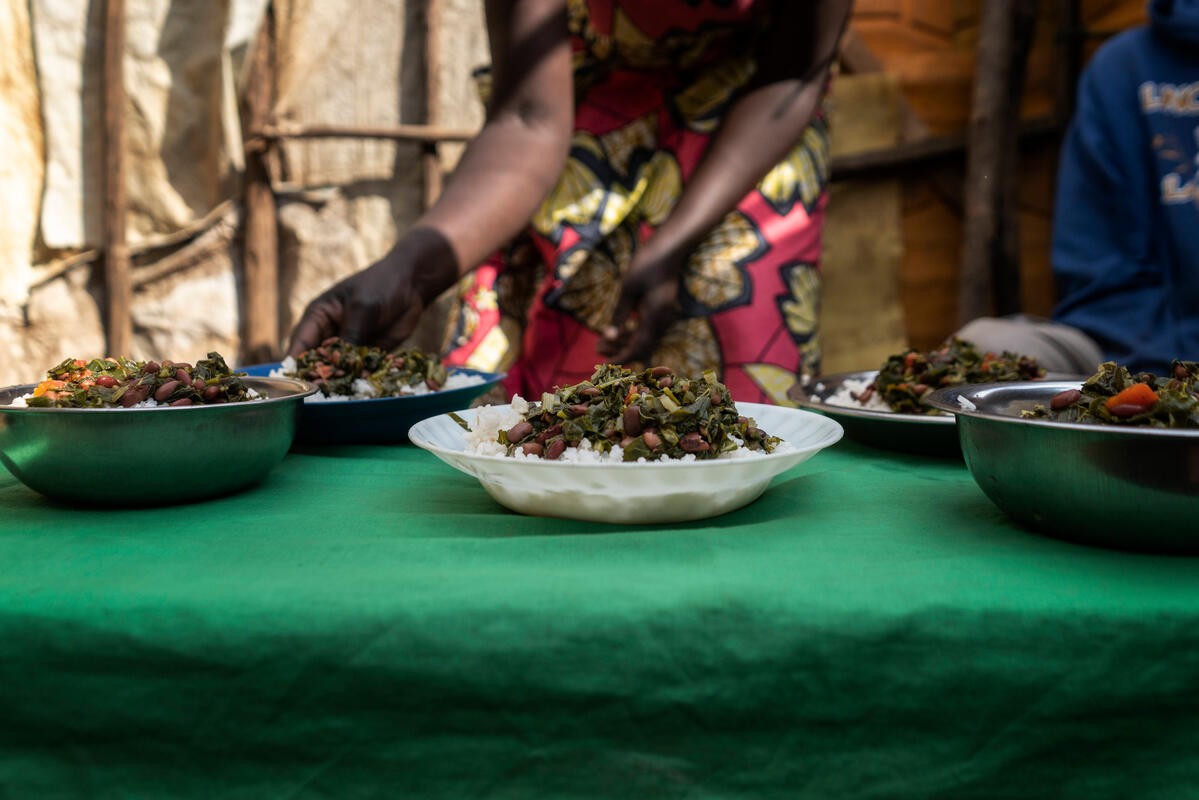
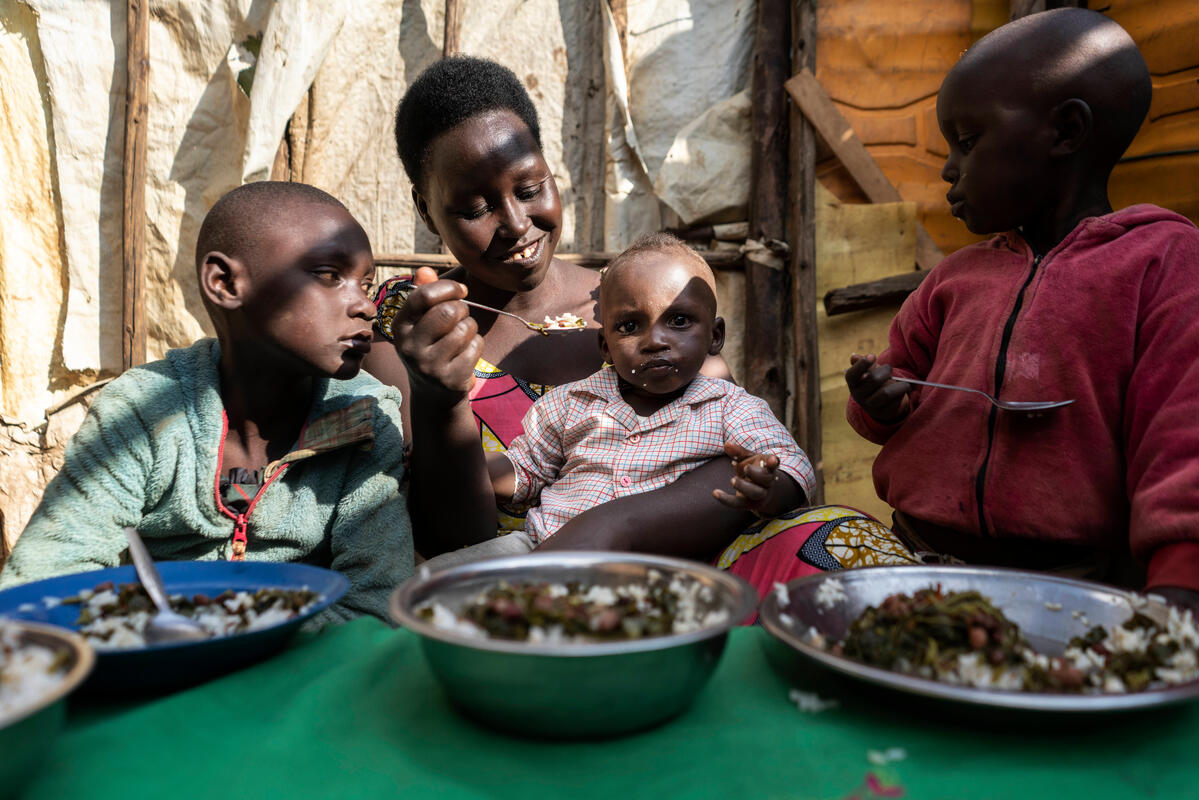
In the Kigeme refugee camp, Jeanne and her family gather around the dinner table for a meal of rice, beans and fresh veggies grown in Jeanne’s garden. Through WFP’s nutrition education programs, Jeanne learned the best practices to care for a kitchen garden: a garden in the family’s backyard that produces nutritious fruits and vegetables.
“During the COVID-19 lockdown, my family was able to eat enough vegetables thanks to the kitchen garden,” said Jeanne.
By growing her own food, Jeanne could save money and build self-sufficiency. To top it off, WFP provided Jeanne a porridge chock full of Vitamin A, Calcium and Potassium for her youngest child Dieu Aimé. Between the fresh veggies and nutritious porridge, Jeanne could rest assured her family is nourished each day.
~
Whether they’re managing to survive on one meal a day or doing their best to make a meal out of little more than rice, the resilience of hungry families around the world has us feeling extra grateful right now. Despite the challenges around them, they’re carrying on culinary traditions, preserving family recipes and building community with what little they have. Mealtimes reveal the universal comfort and sense of belonging that even a simple loaf of bread can bring about, and the U.N. World Food Programme works tirelessly to ensure that this basic human right is afforded to the world’s most vulnerable people.




